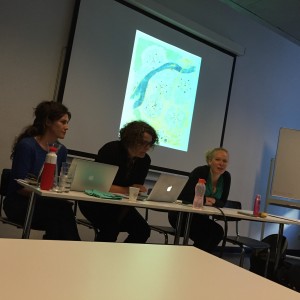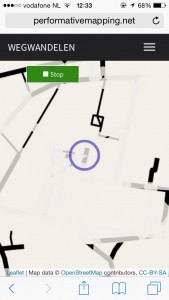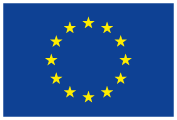Play Perform Participate Conference: Performative Cartography as social, educational and aesthetic strategy
The conference ‘Play Perform Participate’ of the International Society of Intermedial Studies was hosted by the University of Utrecht from 16th – 18th of April 2015. In the panel Performative Cartography (which was chaired by Anne Karin ten Bosch), Naomi Bueno de Mesquita (researcher at Design Academy Eindhoven) together with Sigrid Merx and Liesbeth Groot Nibbelink (both teachers at the Universityy of Utrecht) presented performative mapping as social, educational and aesthetic strategy. In the first part of the lecture they theoretically introduced the notion of performative cartography, addressing the participatory potential of maps and mapping tools as cartographic media. In the second part they discussed the possible meaning and implications of ‘erasing the city’ with the app Wegwandelen.
Performative cartography alludes to the performative turn in cartographic theory, where maps are studied as (interactive) performances and as products of co-creative relationships between maps and users. In this panel Sigrid, Naomi and Liesbeth focused on different uses of maps and practices of mapping: cartography as aesthetic, educational, and social strategy. The panel built on a workshop on collective digital mapping that conference participants could participate in during the conference. Both the output of the workshop and the experiences of the participants would form the material and collective point of reference from which the panelists and their audience started talking about performative cartography.
From the perspective of education dr. Sigrid Merx proposes that performative cartography can function as a creative and playful method and tool that enables students to observe, gather data and reflect on socio-cultural phenomena and practices, using public space as a learning environment. Performative cartography invites learning by doing and playful engagement.
Naomi Bueno de Mesquita presented performative cartography as a social strategy. She pointed to the participatory quality of performative cartography (partially due to the digitisation of maps and mapping software) emphasising how in particular digital mapping in realtime can be used as a tool that allows for collective co-authorship on spaces, agency and appropriation. A method therefore that brings people together and that can contribute to new forms of civic engagement.
Dr. Liesbeth Groot Nibbelink proposed that within the context of theatre, performative cartography could be considered as a staging strategy that organises time and space by setting up a playing field for the actions of performers and spectators, without predicting the outcome, keeping the field open to the potential inherent in the map. This invites to look at the stage and the theatre space as sets of shifting and sometimes collaboratively maintained coordinates, and to understand navigation as an embodied practice. Following Deleuze and Guattari, a map has many openings and entryways, and connects to a variety of fields. The multiplicity of cartography substitutes the linear, logocentric structure of dramatic theatre, and offers a model for describing the compositional strategies that mark the postdramatic landscape: strategies which make room for layered spatial practices and create dramaturgies of situatedness. Theatre thus becomes a navigational practice, involved with the continuous assessment and negotiation of one’s bearings, and the creative investigation of one’s relationship to the spaces through which one moves and that are created through movement.




